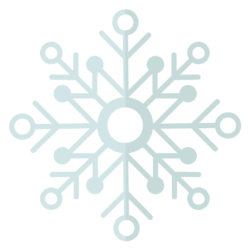By Wild Bill Kelso, PSIA Certified Ski Instructor
Many skiers encounter a vexing issue when progressing through the intermediate levels… crossing their tips. It’s an intermediate rut that can be difficult to overcome. This is one area where snowboarders have an advantage… they don’t have two tips to cross.
When first learning to ski, you strived to stand in balance over the middle of your skis in your snowplow or wedge. To turn, you pointed your feet and legs in the direction of the turn. As you progressed, you skied with more confidence using turns to control your skis rather than the snowplow (wedge).
Next, an up-down motion to unweight the skis to help you to start your the turns. The up-down movement is a vertical motion that equally unweights both skis… the upwards movement initiates the turn (unloads weight off the skis to make it easier to start the turn) and downward movement to finish (load up the skis to dig in at the end of the turn). As this phase, the intermediate skier may experience crossing their tips.
The next step is to learn to weight and unweight (pressure and un-pressure) from left to right. It is the missing ingredient holding you in that ski-crossing rut. By pressuring (pushing down) on the outside ski to make a turn, the ski engages the snow and takes off in the direction of the new turn. Pressuring the ski puts the ski to work in the turn (rather than just your muscles alone).
Newer skis are designed to turn if you let them do their job. When starting a new turn, if your weight is still standing on the ski from the last turn, the skis will fight each other and collide (i.e. cross your tips). The unintended consequence that the last turn is still going in the old direction while you are trying to go the opposite in the new turn.
To learn the left-right muscle movement, try it at home in your street shoes. Push down on one foot without moving your body or changing your balance. Next when pressing down on one foot with your muscle movement, lighten up on the opposite foot. It’s a gradual movement not a radical move. Keep your balance steady while doing this. It’s the subtle lightening on the opposite foot that keeps you from crossing your skis and is the core of this lesson.
On the hill, as you pressure (push down on) the new ski to start a turn, unweight the inside ski of the turn. Unweighting the inside ski of the new turn allows the inside ski to follow along with the turn. Hanging onto the old turn while starting the new turn by heavily standing on the inside foot causes the skis to cross.
The left to right motion is just like pedaling left to right. Not exactly like a bicycle but more like two gas pedals, your right foot is a left turn gas pedal and your left foot is a right turn gas pedal. To be clear, the left turn is triggered by pressuring (pushing down) on the right ski while simultaneously getting light on the left ski. Conversely, the right turn is triggered by pressuring the left ski while getting light on the right ski. Fully commit to the new ski and new turn and don’t hang onto the old turn. It’s a lot harder to explain on paper than to show in person.
Some people pick up the inside ski to unload the pressure. That’s fine as a learning step if it works for you. Lifting the ski unloads the ski all at once and can cause sharp Z turns.
If you notice that your skis mostly cross in one turn direction or the other, there is good chance one of your turns has developed better than the other. That is a positive step towards learning. Everyone has a stronger turn and a weaker as they develop. Get the feel of what you are doing right on one side and take that movement to the other turn.
The above discussion is one part of the solution to solve crossing your tips. On an individual basis, there are other possible issues that could cause or contribute to the problem such as leaning up the hill or twisting into the turn.
Best of luck learning your new skill!
Wild Bill

